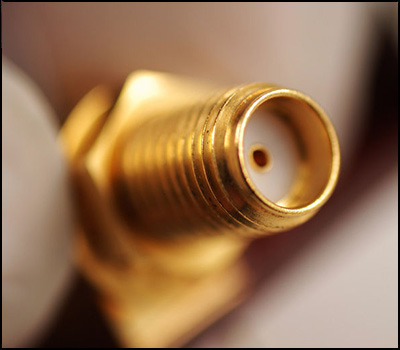With the onset of the wet and cold season, the one thing to ensure is that electrical connectors, especially the ones that are exposed, are checked for signs of corrosion.
This involves physically disconnecting the un-sealed connectors and inspecting them thoroughly. Any corrosion is likely to cause a whole lot of electrical issues. Corrosion is likely to begin at any place where there is a likely intrusion of water or moisture.
Disconnecting all connectors, removing the position assurance clip and looking for signs of corrosion by way of a green or white powdery film is a starting point. In some cases dielectric grease may have been applied, however that too does not guarantee complete success. In case signs of corrosion are found, cleaning the terminals completely is required. This can be done using a fixed terminal cleaning tool kit or wire brush and an aerosol contact cleaner.
Where corrosion is severe, it is recommended that the damaged terminals are removed and the wires cleaned. Heat shrink tubing is another way to ensure that corrosion does not re-occur. It is also prudent to use weatherproof connectors so that the occurrence of corrosion is stemmed.
Proper maintenance also involves checking for the following:
Inspecting cords and cables for abrasions
This involves looking for cracks and tears as they could result in outage or shock. In such cases, it in advisable to replace the cable. It is prudent to use retractile cords that are resistant to tearing. Reeling cables are another option that can resist damage.
Check connections
Just as damaged cables, loose connections can act as a big safety risk. Using proper connectors with a self-sealing design therefore is important. Ensuring that a connector is securely locked so that the connection is secure is very important.
Ensure cable trays are not overloaded
Overloaded cable trays are a safety risk. With poor ventilation, heat build up and strain cable trays can become safety hazards. It is advisable to see that the capacity inside a cable tray does not exceed 50% of its inside area. Also cable trays come with weight limits that need to be adhered to.
Consider Environmental factors
Environmental factors are extremely important while conducting a safety inspection. It is important to use the right cables and connectors that are suited to the conditions. For example antimicrobial cables protect against bacteria, mold and fungi. Using such cables will kill microorganisms that are drawn to manufacturing settings such as a food processing plant. Similarly a chemical and heat resistant cable needs to be used in places prone to high temperatures. A fire resistant cable is used in places prone to flames. A thorough inspection of your unique environmental conditions therefore goes a long way in using the right cables.
Similarly a right cable cleat needs to be used basis the number of cables used and the force exerted by them. Non-metallic and aluminum cable cleats typically fit all kinds of installation environment. In cases where the environment is rough and tough, epoxy coated cable cleats are the right choice as they protect the cable from damage. Cable cleats can be applied in outdoor and indoor power cables. Not only does it offer the right support for cable retention, it also offers resistance to ultraviolet rays. A number of cables such as LV, MV and HV Cables works well with the Trefoil type aluminum cable cleat. Low smoke zero halogen polymer made cleats as well as low density polyethylene and polypropylene cleats are also popular.
The environmental reaction, therefore, at the installation site of cable glands, goes a long way in best choosing the cabling system. Basis the environmental conditions, cable glands such as water-proof ones, resistant to corrosion, resistant to moisture, flame proof or vibration resistance glands can be chosen.
Maintenance can in effect be classified into the following types:
Preventive Maintenance- Although it’s possible to fix faults as and when they occur, repairs can prove to be costly as well as time-consuming not to mention the fact that they can turn out to be a safety hazard. In order to ensure both reliability as well as safety continued maintenance therefore is imperative. Preventive maintenance is largely carried out annually and includes checking the condition of connections and joints and correcting any issues found. This also involves conducting insulation resistance tests to figure out if there has been any wear and tear. Maintenance is also conducted with reference to thermal scanning. Joints that exhibit increase in temperature are cleaned and re-torqued.
Corrective Maintenance- This maintenance is in response to faults and involves steps such as insulation resistance testing, repairing, re-testing as also reducing the risk of re-occurrence through root cause analysis.
Condition-Based Maintenance– This checks cables and grid fixtures and involves replacement as well as prediction of repairs for the future.
 SUBSCRIBE TO OUR BLOG
SUBSCRIBE TO OUR BLOG
